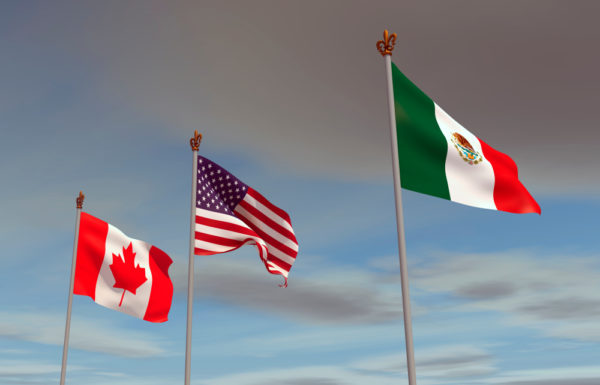July 17, 2020
USMCA vs. NAFTA: What’s the Difference?

In September 2018, The United States, Canadian, and Mexican governments announced a new trilateral free trade agreement. As of March 2020, the agreement, known as USMCA or CUSMA, is approved by all three nations and is set to effectively replace the previous agreement, NAFTA.
The USMCA’s main goal is to implement a free-trade system that accommodates for the digital era. The agreement features several key changes that make it different from and a notable improvement to NAFTA.
What Is NAFTA and What Does It Stand for?
Prior to the introduction of the USMCA/CUSMA, the North American Free Trade Agreement (NAFTA) was in place to help reduce trade costs, increase investment opportunities, and enable North American nations to play a more integral role in the global marketplace. The agreement came into effect in 1994.
Like the newly approved USMCA, NAFTA is an agreement between Canada, the U.S., and Mexico, with the goal of liberalizing trade between the three countries.
What Is USMCA/CUSMA and What Does It Stand for?
The new agreement is known in the U.S. as the United States-Mexico-Canada Agreement (USMCA) and worldwide as the Canada-United States-Mexico Agreement (CUSMA). The main goal of the USMCA/CUSMA is to modernize free trade between the three countries and make some necessary updates to rules of origin and processes around North American trade.
How Are NAFTA and USMCA Different?
There are some main differences between the USMCA and NAFTA that will make the USMCA a more ideal replacement for NAFTA.

De Minimis
One big change was the threshold for duty-free entry of low-value goods into each of the three countries. The new de minimis include:
• Canada: $40 CAD for taxes and $150 CAD for customs
• U.S. – $800 USD
• Mexico – $50 USD for taxes and $117 USD for customs
Certificate of Origin
Unlike NAFTA, the USMCA won’t require importers to complete a formal certification document. Instead, importers, exporters, or producers can use informal documentation including commercial invoices. However, under the USMCA, previous NAFTA certification documentation and certificates will need to be kept for at least five years.
Improved Dairy Market Access
The U.S. dairy market will benefit from access to another 3.6 percent of the Canadian dairy market. The USMCA also removed restrictions on imports of ultra-filtered milk into Canada from the U.S. Canada further benefits from keeping the dairy supply management system currently in place, which maintains limits on imports of foreign dairy products.
Automotive Changes
The North American auto industry will also benefit from the changes made in the USMCA. For example, the agreement requires 75 percent of a vehicle’s parts to come from North America, an increase from the 62.5 percent rule in NAFTA. In addition, 70 percent of all glass, aluminum, and steel automotive fabrication materials must come from North America. Workers who help produce 40 percent of automobiles and 45 percent of light trucks will also be required to make at least $16 per hour.
There are several other areas that the USMCA will affect, making it a considerable improvement over NAFTA. Ultimately, the ratification of the new agreement will lead to several major changes in North American trade.
For up-to-date information regarding USMCA, visit our CUSMA page. If you need help understanding these changes, or navigating their impact, Carson International can walk you through these updates every step of the way.